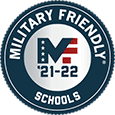Cranes allow for the building of some of the tallest buildings and structures around the world. The ability to lift heavy loads and move them around with relative ease makes getting projects done simpler.
However, successful lifts don’t happen by accident. Before using any type of crane, the lift must be thoroughly planned out—which includes consulting the crane load chart. This important piece of information must be consulted before you can safely operate the crane. Take a few minutes to learn how to read a load chart.
What Is a Crane Load Chart?
The crane load chart is vital to the success of any lift. It details what the crane can do, like its capacity to lift while factoring distance and angle. A load chart also helps an operator thoroughly plan out a lift from start to finish.
You can usually find a crane load chart within the operator’s manual for the machine you’re operating. It’s important that you consult this load chart, as the manufacturer included accurate details.
How to Read a Crane Load Chart
After locating the load chart, you’ll see several factors related to the crane’s lift capacity, range, and more. Here are some of the major ones you’ll need to know.
Lift Capacity
Cranes are some of the most powerful machines on a construction site. On average, a crane can lift anywhere from 10,000 to 60,000 tons. This is what’s known as the crane’s lift capacity and it tells you how much a crane can lift naturally as well as its height and angle.
Lift Range
Most load charts will have a range diagram. This will illustrate the boom length needed to pick up and lift a load both at a distance and at height. The range diagram can also help you when setting up near structures. If you must make deductions for the wire rope, consult the working range diagram to help you calculate it.
A working range diagram is separated into five categories:
- Load radius (vertical lines)
- Boom tip height (horizontal lines)
- Boom jib length (arched sections)
- Boom angles (angled lines)
Caution area (prohibited area)
Boom Angle
The boom angle is found between the longitudinal centerline of the boom and the horizontal centerline. When attempting to find the correct angle, you must consider the stability of the crane. If the angle cannot support the weight, the crane could become unstable.
Movement
Even static cranes like Tower cranes usually need to move or rotate to complete a lift. You need to factor in how far and how fast you rotate or move the crane into your calculations. A miscalculation or failure to consult the load chart could end in the crane tipping over.
Deduction
It’s easy to forget that when you’re using a crane to lift heavy loads, you must also factor in the weight of the crane and its accessories. A proper crane load calculation formula calls for deducting the accessories and weight of the crane. The net capacity of a crane is dependent upon the nature of the lift and what capacity deductions need to be subtracted from the gross capacity.
Accessories that should be deducted include
- The rigging
- The line
- The ball and jib
- The block
- The windspeed and windsail
Capacity deductions can include
- The weight of the main load block
- The weight of the headache ball
- The weight of the jib
- The weight of all hanging cables
- The weight of all rigging materials
- The weight of the load that is being lifted
Crane Safety Importance
The load chart exists for a reason. Per OSHA guidelines, crane operators must be familiar with and know how to use the load chart to safely perform a lift. If left to guess at the capabilities of their crane, a crane operator could cause severe injury and damage the crane and nearby crew.
Become a Crane Operator Through an HEC Program
Don’t just read about cranes—learn how to operate one and turn it into a fulfilling career. At HEC, we offer students the opportunity to get trained and certified as a Mobile crane, Tower crane, Lattice Boom Crawler Crane operator in as little as three weeks (two weeks for Tower crane).




